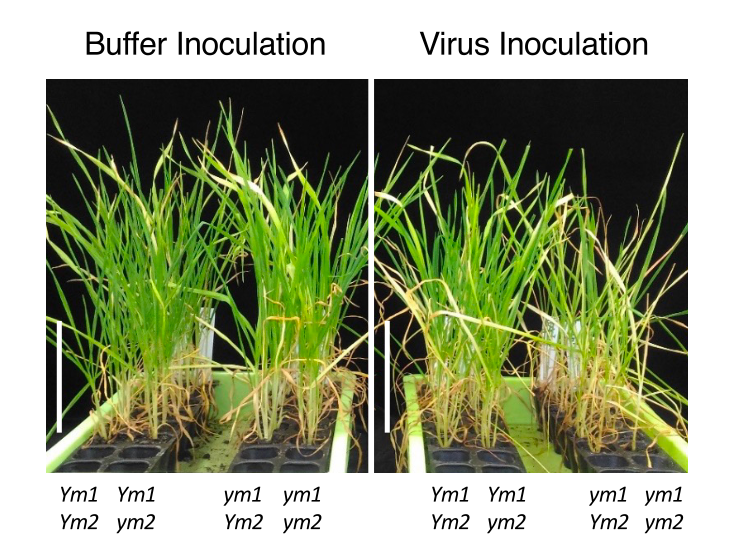
A new research article published in the Proceedings of the National Academy of Sciences (Click here: PNAS) has revealed the genetic structure and mechanism behind the Ym2 virus gene resistance found in certain wheat varieties. The study aims to aid in the development of more resistant wheat cultivars and underscores the importance of preserving biodiversity for the future security of food supplies.
Led by a team of researchers from various institutions, including Gencovery’s bioinformatician researcher (Romain DE OLIVEIRA), the study analysed the DNA sequence of the Ym2 gene in multiple wheat species and cultivars to understand the resistance mechanism and its ancient origins in wild grasses. The Ym2 gene provides wheat with resistance to the Wheat Yellow Mosaic Virus (WYMV) and is located on the long arm of chromosome 2D in bread wheat. The study found that the Ym2 gene in modern bread wheat derives from an ancient wild plant called Aegilops sharonensis.

The Ym2 gene codes for a protein of the type NBS-LRR, which is a nucleotide-binding site and a domain of leucine-rich repeats. This protein serves as the guardian that detects pathogens and triggers the plant's immune response, reducing the impact of WYMV on plants by over 70 percent. The study also opens the possibility of discovering variants of Ym2 in wild relatives of wheat that may provide superior resistance.
Wheat is a highly productive crop that has been a dietary staple for more than 20,000 years in many regions and cultures. The Wheat Yellow Mosaic Virus (WYMV) frequently devastates wheat crops worldwide, leading to high demand for wheat cultivars that can resist the virus. The virus is transmitted through soil-borne fungi, specifically Polymyxa graminis, which acts as a vector for the disease.
The economic impact of WYMV can be significant, with yield losses of up to 80% reported in some cases, resulting in substantial financial losses for farmers, particularly in regions where wheat is a major crop. Efforts to control WYMV typically involve a combination of cultural practices and chemical treatments, with some wheat varieties developed that are resistant to the virus.
Take Home Message:
- Infection with wheat yellow mosaic virus causes significant economic losses in terms of yield worldwide. However, the genetic basis of resistance to this virus is not well understood. This study was conducted to isolate the sequence of the Ym2 resistance gene in related species. These new results suggest that Ym2 was inherited from Aegilops sharonensis, a distant relative of the bread wheat B genome donor, rather than from Aegilops speltoides, a closely related species.
- The analysis provides new information on how the Ym2 region arose during the evolution of cultivated wheat. This study not only provides essential information on the evolutionary origins of cultivated wheat, but also offers new avenues for developing more effective strategies to combat this devastating virus. For example, by developing more resistant wheat cultivars. Finally, this study highlights the importance of preserving biodiversity to ensure the future security of food supplies.
Reference:
Mishina et al., 2023; “Wheat Ym2 originated from Aegilops sharonensis and confers resistance to soil-borne Wheat yellow mosaic virus infection to the roots”. Proc. Natl. Acad. Sci. doi: 10.1073/pnas.2214968120

Comments (0)
Write a comment